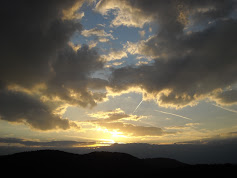
I found a description of how these trees were fashioned by our Native-American forefathers:
"Every tribal nation had its own timber language which everyone in the tribe knew how to read. There was also a general timber language consisting of a few markings to help distant travelers find their way and survive on unfamiliar ground.
It was quite simple to shape a thong tree. A stone ax to cut the two thongs was the only tool needed. The thongs were sturdy forked green sticks in the shape of a Y, heavy enough to hold the weight of the sapling and thick enough not to rot out in the ground for the few years necessary to set the tree in its desired shape. The base of the fork would have been at least six inches in diameter if the sapling was the size of a thumb.
The sapling chosen was usually white oak because it was supple enough to bend easily and had less likelihood of splitting and causing the tree to die. If white oak was not available, any nearby hardwood was used--even sassafras.
To shape the sapling the Indians first drove the base of one forked stick into the ground near the foot of the sapling. They bent the trunk through the fork to form the first or hip bend. Then they placed the other forked stick upside down over the trunk some two or three feet toward the crown of the tree, driving the two prongs into the ground. Though the trunk was imprisoned in a sort of inverted J pattern, the top of the tree was left to either grow up toward the light or rot away, thus forming the second bend which became the nose. The further shape of the tree depended upon the location of small branches on the trunk of the sapling. Most of the side branches were trimmed off, but sometimes they would leave one on top causing the tree to grow in the shape of a 4 with the two branches growing upward. One occasionally finds a tree with three or more branches. " - Teresa Maddux from Bittersweet Volume VI Number 2
For more info on Thong Trees, view the Trail Tree Project page at Mountain
Stewards.org.































No comments:
Post a Comment